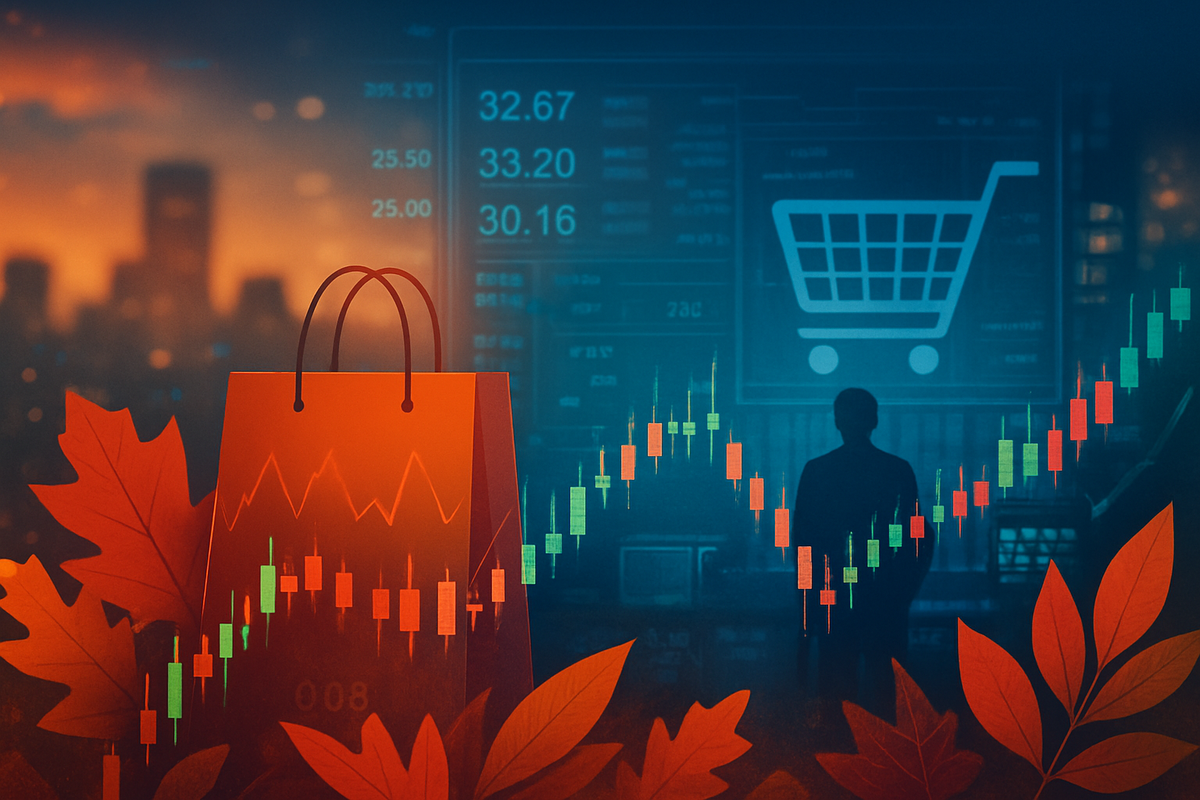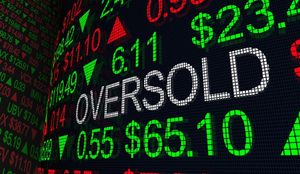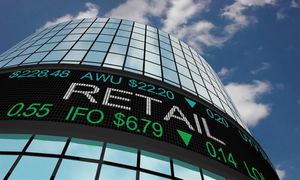
As the U.S. prepares to feast and shop, the financial markets brace for a predictable yet impactful shift. With Thanksgiving Day (November 27, 2025) and Black Friday (November 28, 2025) on the horizon, stock market operations and trading volumes are set to undergo significant changes, marking one of the slowest yet historically bullish periods of the year. This annual cycle provides a crucial barometer for consumer sentiment and offers unique insights into the underlying health of the economy, particularly for the retail and e-commerce sectors.
The holiday schedule brings with it specific market closures and shortened trading hours, directly affecting liquidity and potentially amplifying market movements. While the full impact of this year's holiday spending will only be clear in the coming weeks, investors are keenly watching for early indicators that could set the tone for the remainder of 2025 and into the new year.
Holiday Market Dynamics: Navigating Thanksgiving and Black Friday's Financial Currents
The U.S. stock market adheres to a distinct schedule around the Thanksgiving holiday. On Thanksgiving Day itself, November 27, 2025, both the New York Stock Exchange (NYSE) (NYSE: ICE) and Nasdaq (NASDAQ: NDAQ) will be fully closed, along with the U.S. bond market. The day prior, Wednesday, November 26, 2025, sees regular stock market hours, but the bond market typically closes early at 2:00 p.m. ET. The most notable operational change occurs on Black Friday, November 28, 2025, when both the NYSE and Nasdaq operate on a shortened schedule, closing early at 1:00 p.m. ET, with eligible options trading until 1:15 p.m. ET. The bond market also closes early at 2:00 p.m. ET.
This abbreviated trading period significantly impacts market liquidity. Trading volumes generally decline throughout Thanksgiving week, falling to about 80% of normal levels the day before the holiday. On Black Friday, volumes can plummet to as low as 45% of their typical levels. This reduction in liquidity means fewer shares are exchanged, which can potentially magnify the impact of individual trades and lead to higher volatility in thinly traded securities. Despite the lower volumes, a historical pattern known as the "Thanksgiving Rally" often sees the S&P 500 (NYSEARCA: SPY) deliver modest gains in the days leading up to and including Black Friday. Since 1928, the S&P 500 has finished Thanksgiving weeks positive about 60% of the time, with an average return of 0.28%.
The lead-up to Thanksgiving 2025 has been characterized by investor sentiment described as "exhausted," with caution stemming from uncertainty around near-term Federal Reserve rate cuts and concerns over AI valuations. However, the historical positive bias around this holiday period, coupled with the anticipation of robust consumer spending, often provides a counterbalancing force. Investors and analysts closely monitor Black Friday and Cyber Monday retail sales data as crucial early indicators of consumer confidence and the health of the retail sector, which can influence broader market sentiment and stock valuations.
Corporate Contenders: Who Wins and Loses in the Holiday Rush
The Thanksgiving and Black Friday period presents a critical test for various sectors, with some public companies poised to capitalize on shifting consumer behaviors while others face significant challenges. The overall holiday retail sales for 2025 are projected to surpass $1 trillion for the first time, yet consumers are exercising caution due to economic pressures like inflation and tariffs, leading to a focus on value and earlier, more strategic shopping.
Potential Winners:
- Large E-commerce Retailers: Companies with robust online platforms, such as Amazon (NASDAQ: AMZN), Walmart (NYSE: WMT), and Target (NYSE: TGT), are exceptionally well-positioned. Their early promotional strategies (the "Black November" trend), ability to leverage AI for personalized shopping experiences, and advanced demand forecasting capabilities give them a significant edge. Amazon, in particular, is expected to dominate Cyber Week, with a vast majority of shoppers planning to make purchases there. Walmart and Target are also top choices for in-person Black Friday shopping, leveraging their scale to offer competitive pricing.
- Companies with Strong Mobile Commerce and AI Capabilities: Retailers that have invested in seamless mobile shopping experiences, dedicated apps, and AI-driven personalization will capture a larger share of the increasingly mobile and tech-savvy consumer base.
- Logistics and Shipping Companies: While facing increased demand, companies like FedEx (NYSE: FDX) and DHL (FWB: DHL) that utilize AI for forecasting, optimize routes, and have strong carrier relationships are better equipped to manage the surge in freight volumes, which are expected to increase by 20-25% compared to typical weeks.
- "Buy Now, Pay Later" (BNPL) Providers: As consumers seek to stretch their budgets, BNPL services are seeing increased usage, with online purchases via BNPL expected to rise by 11% from 2024.
- Specialty Retailers Offering Deep Discounts: Price-sensitive consumers are actively hunting for deals, benefiting retailers that can offer significant, timely, and personalized promotions, especially in high-demand categories like electronics, apparel, and home goods.
Potential Losers:
- Retailers with Weak Online Presence or Inefficient Logistics: Businesses unable to meet the demands of e-commerce, mobile shopping, and timely delivery will struggle. Stockouts due to inadequate preparation or inefficient supply chains can lead to frustrated customers and lost sales.
- Companies Heavily Reliant on Traditional In-Store Foot Traffic: While brick-and-mortar shopping still exists, the overall trend leans towards online and early shopping, diminishing the singular impact of Black Friday doorbusters. Retailers without a strong omnichannel strategy may see reduced traffic and sales.
- Retailers Unable to Offer Competitive Pricing/Deals: With consumers highly price-sensitive, companies unable to match competitors' promotions due to economic pressures or high tariffs may experience reduced sales volumes and market share.
- Companies with Poor Inventory Management: Both stockouts and overstocking can severely impact margins. Accurate demand forecasting is critical, and those who fail in this aspect will suffer financially.
- Retailers Facing Significant Tariff Impacts: Categories like electronics, household appliances, and apparel are particularly vulnerable to tariffs, which can lead to supply delays, increased costs, and constrained inventories. Companies unable to manage or absorb these costs may see a negative impact on profitability.
Beyond the Sales: Wider Implications for the Financial Landscape
The Thanksgiving and Black Friday period, while focused on retail, casts a wider net across the financial landscape, reflecting and accelerating broader industry trends. This annual event has evolved from a single-day shopping frenzy into a prolonged "Black November," signaling a fundamental shift in consumer behavior and retail strategy.
The most significant trend is the continued acceleration of e-commerce. Black Friday has transitioned from a brick-and-mortar spectacle to a predominantly online event. This shift means that logistical capabilities, real-time tracking, and efficient post-purchase experiences are now crucial battlegrounds for retail success. The surge in online shopping places immense pressure on supply chains and logistics, with companies constantly innovating to manage increased freight volumes, optimize warehousing, and ensure last-mile delivery. The ability to accurately predict demand and mitigate disruptions becomes paramount, driving investment in AI-driven tools for forecasting and route optimization.
Consumer sentiment plays a pivotal role, with holiday sales figures serving as a vital early indicator of the broader economic health. While the "Thanksgiving Rally" often brings a bullish bias to the stock market, the underlying cautious consumer spending, influenced by persistent inflation and tariffs, highlights a more complex picture. Investors closely scrutinize these sales figures to gauge consumer confidence, which can significantly influence retail stock valuations and the broader market outlook. The observed "K-shaped" recovery, where affluent households drive early sales while lower-income shoppers focus on later deals, further underscores economic disparities.
Historically, the "holiday effect" is a well-documented phenomenon, where stocks tend to perform well before major holidays. The "Thanksgiving Rally" is often followed by the "Santa Claus Rally," a sustained increase in the stock market during the last week of December and early January. December itself has historically been one of the strongest months for the S&P 500, averaging a 1.25% gain since 1928. These historical precedents provide a framework for investors, though current macroeconomic factors, such as the Federal Reserve's interest rate policy and geopolitical risks, introduce additional layers of complexity. While direct regulatory implications for holiday trading schedules are minimal, broader economic policies like tariffs can indirectly influence consumer spending and, consequently, holiday sales and market performance.
The Road Ahead: What to Expect Post-Holiday
As the Thanksgiving and Black Friday dust settles, the financial markets pivot towards the critical year-end performance and the outlook for early 2026. The immediate post-holiday period will be dominated by the analysis of consumer spending data, which will serve as a key indicator of economic momentum.
Short-term possibilities point to continued focus on retail sector performance. Historically, retail and e-commerce stocks tend to outperform the S&P 500 in the weeks following Black Friday. However, the reduced market liquidity during Thanksgiving week can lead to heightened volatility, particularly in thinly traded assets. Investor sentiment, while cautiously optimistic due to historical holiday rallies, remains wary of lingering inflation and the Federal Reserve's interest rate trajectory. Consumer confidence, as indicated by recent surveys, has been slipping, suggesting that while spending is resilient, it is also more deliberate and value-driven.
Long-term possibilities into 2026 highlight a U.S. economy expected to show resilience, with moderate growth projections supported by AI investment and potential fiscal stimulus. Inflation is anticipated to remain "sticky," averaging above 3%, which will keep the Federal Reserve's rate cut decisions under close scrutiny. Geopolitical risks and tariffs will continue to pose headwinds, potentially slowing growth and impacting corporate profitability, especially for companies heavily exposed to import duties like Nike (NYSE: NKE).
Companies are compelled to undertake strategic pivots and adaptations. A paramount shift is towards heightened customer-centricity and personalization, leveraging AI to deliver tailored product recommendations and dynamic content. Robust investment in AI, machine learning, and automation is becoming critical for operational efficiency, agile omnichannel strategies, and improved customer experiences. Modernizing supply chains with advanced analytics, real-time visibility, and digital twins is essential to navigate demand volatility and cost pressures. Furthermore, a likely overhaul of return policies is anticipated in 2026, with retailers using machine learning to selectively offer favorable terms to their most profitable customers. The emphasis on sustainability and transparency will also continue to grow, influencing consumer choices and corporate practices.
Market opportunities will emerge in AI-driven services, e-commerce growth (especially mobile commerce), and niche markets catering to health, wellness, and sustainable products. Challenges will persist from consumer caution, sticky inflation, intense competition, and ongoing supply chain disruptions. Geopolitical risks and the talent gap in tech-savvy professionals will also require careful navigation.
Potential scenarios range from an Optimistic Scenario, driven by strong holiday sales and AI-fueled productivity, leading to sustained market rallies; a Moderate Scenario, characterized by volatile but adaptive growth as companies successfully pivot to new technologies; to a Pessimistic Scenario, where weak sales and economic headwinds lead to a market downturn and increased bankruptcies. The post-Thanksgiving period serves as a crucial barometer, with the longer-term outlook for 2026 emphasizing the transformative power of AI, the ongoing need for supply chain resilience, and the critical importance of adaptable, customer-centric strategies.
Concluding Insights: A Look Towards 2026
The Thanksgiving and Black Friday period of 2025, while a fleeting moment in the annual calendar, offers profound insights into the evolving dynamics of consumer behavior and its ripple effects across financial markets. The key takeaway is the dual nature of this period: a time of predictable market operational shifts and reduced liquidity, yet also a powerful indicator of underlying economic health and consumer sentiment. The "Thanksgiving Rally" and the subsequent "Santa Claus Rally" underscore the historical bullish bias that often accompanies year-end trading, even amidst lower trading volumes.
Moving forward into late 2025 and early 2026, the market is poised for continued resilience, albeit with a degree of turbulence. While historical seasonality suggests a favorable December for equities, investors will be closely watching the Federal Reserve's actions regarding interest rates and the ongoing debate surrounding AI valuations. Corporate earnings, particularly from the retail and technology sectors, will provide critical data points on the impact of holiday spending and the broader adoption of AI for efficiency and growth. The persistent challenge of sticky inflation and geopolitical risks will continue to shape investor sentiment and market volatility.
The lasting impact of these holiday patterns lies in their role as a catalyst for retail transformation. The accelerated shift to e-commerce, the elongation of promotional periods into "Black November," and the increasing reliance on AI for personalization and supply chain optimization are not temporary trends but fundamental changes in how businesses operate and how consumers shop. For investors, this means a continuous need to adapt strategies, focusing on companies that demonstrate agility, technological prowess, and a deep understanding of evolving consumer demands.
In the coming months, investors should vigilantly monitor official retail sales data for November and December to gauge the true strength of consumer spending. Federal Reserve commentary and actions on interest rates will be paramount, as will inflation and labor market figures. Fourth-quarter corporate earnings reports, particularly from key retail and technology players, will offer a granular view of performance. Furthermore, the valuations of AI companies will remain a significant point of contention, potentially driving market volatility. Geopolitical developments and shifts in trade policy could also introduce unforeseen uncertainties. By carefully observing these multifaceted factors, investors can better position their portfolios to navigate the opportunities and challenges presented by the post-holiday financial markets and beyond into 2026.
This content is intended for informational purposes only and is not financial advice





